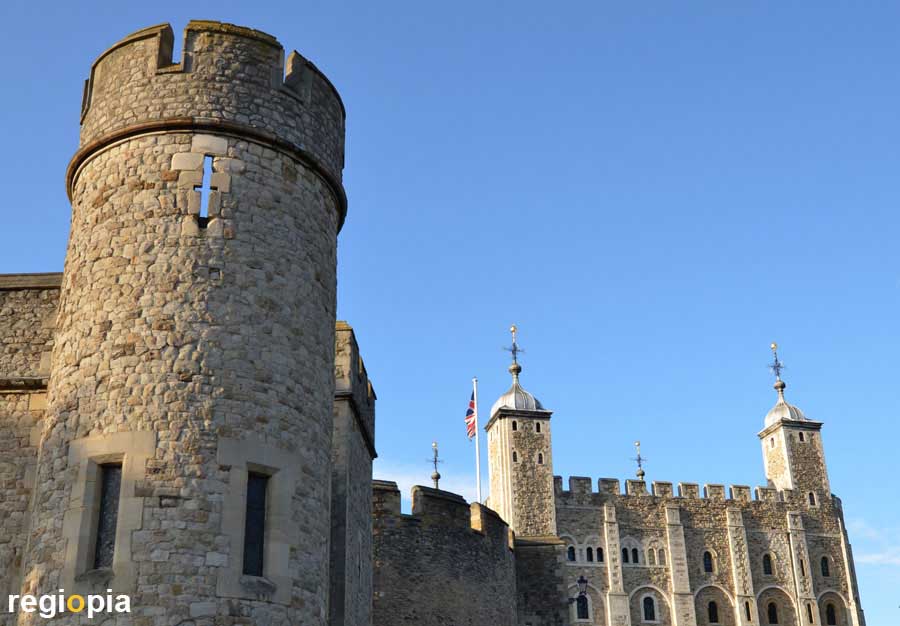
Tower of London
The Frenchman William the Conqueror landed in England in 1066 and conquered the island. To secure his power, he built the Tower of London. William built the fortress in 1077 on the eastern boundary of the Roman city walls, to control the Thames. This area of the castle is called the "White Tower" because it was built from white limestone from Normandy. The "White Tower" is today the center of the fortress. The Tower of London was expanded by Richard the Lionheart in the 12th century and Henry III in the 13th century.
The fortress consists of two ring wall with deep trenches and the castle in the center. Back then, one reached the inner courtyard of the tower via drawbridges. In the Waterloo Barracks the British crown jewels are exhibited. There was also access from the river Thames, called the Traitors' Gate. The prisoners who were arrested or executed in the tower arrived here. Anne Boleyn, Queen of England and sixth wife of Henry VIII was beheaded in the Tower. The "Tower of London" is one of the most famous sights of London with several million visitors a year.
Underground Station: Tower Hill
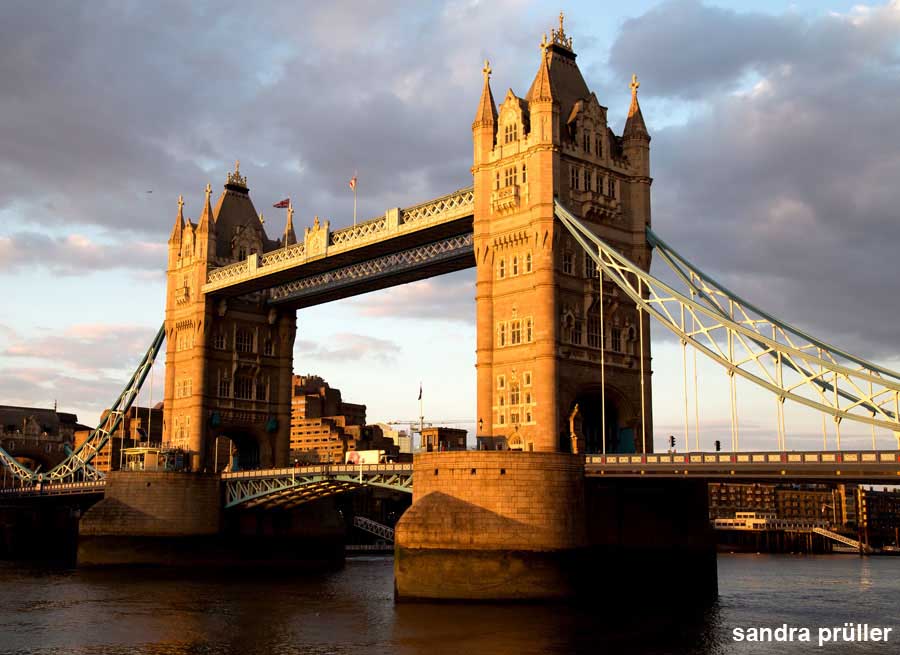
Tower Bridge
Tower Bridge spanns over the river Thames east of the Tower of London. When the bridge was planned, port facilities still stretched along the Thames until London Bridge. In order to allow large ships to pass through, the Tower Bridge was constructed with fold-out decking. The late Victorian bascule bridge was designed by architect Horace Jones. Construction of the bridge began in 1886. Tower Bridge was completed in 1894 after around 8 years of construction. In the bridge there is a museum that provides information about the construction history and technology of the bridge. Tower Bridge is now one of the landmarks of London. The 244 m long bridge offers a beautiful view of the London skyline.
Underground Station: Tower Hill or London Bridge
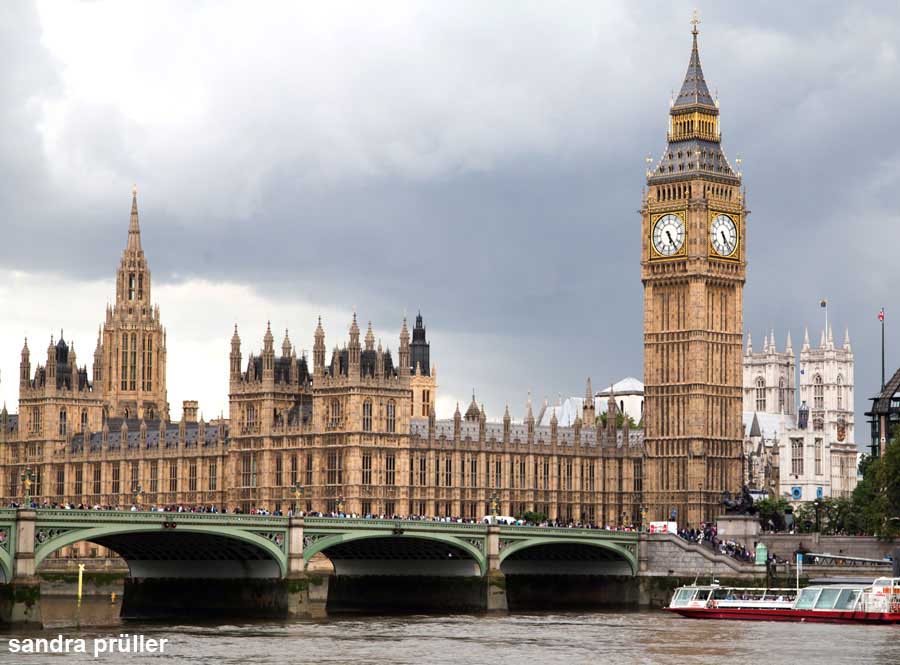
Big Ben & Palace of Westminster
The Big Ben is the clock tower of the Palace of Westminster. Big Ben is the name of the largest bell in the 96 m high Elizabeth Tower. Colloquially, the whole tower is called Big Ben. The bell, which weighed over 13 tons, struck for the first time in 1859 and is also called "The Voice of Britain". Big Ben is always rung on the hour. The Big Ben is one of the most famous sights of London and a symbol of Great Britain.
The Palace of Westminster is the British Parliament building. It was originally a royal palace, with some rooms used for the royal advice. When a fire destroyed the palace in 1529, Henry VIII moved to the Palace of Whitehall and the council met in a chapel in Westminster. From this place the English parliament developed. When this parliamentary district burned down in 1834, the royal commission decided to build a new parliament building.
In other countries, classicist-style parliaments were established to commemorate Greece, the cradle of democracy. This was not British enough for the British; the new parliament should be built in the Gothic or Tudor style. Charles Barry won the architecture competition with his neo-Gothic design. The Westminster Palace was built between 1840 and 1860.
Underground Station: Westminster
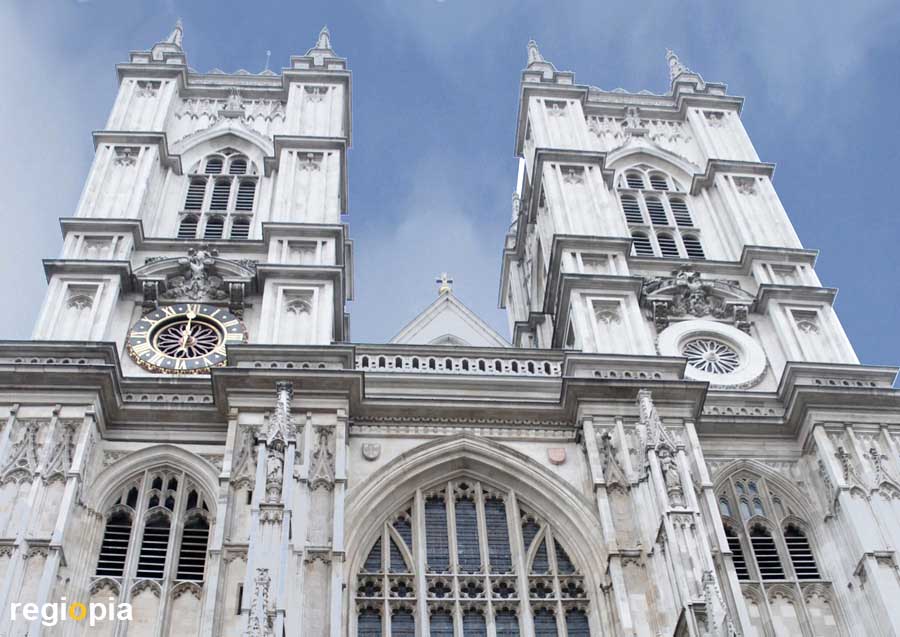
Westminster Abbey
Westminster Abbey is the private church of the British monarchy, where almost all the kings and queens of England were crowned. The church is also the final resting place of the monarchy. Westminster Abbey became known worldwide with the wedding of Prince William and Kate in 2011, when half of the world witnessed the dream wedding on television. The Gothic church was built between 1245 and 1745 when the west towers were completed. The central nave is very narrow at around 10 m, but at 31 m it is one of the tallest in England. The most beautiful part is the Lady Chapel, which was inaugurated in 1516. It impresses with a beautiful vaulted ceiling and magnificent choir stalls.
Underground Station: Westminster
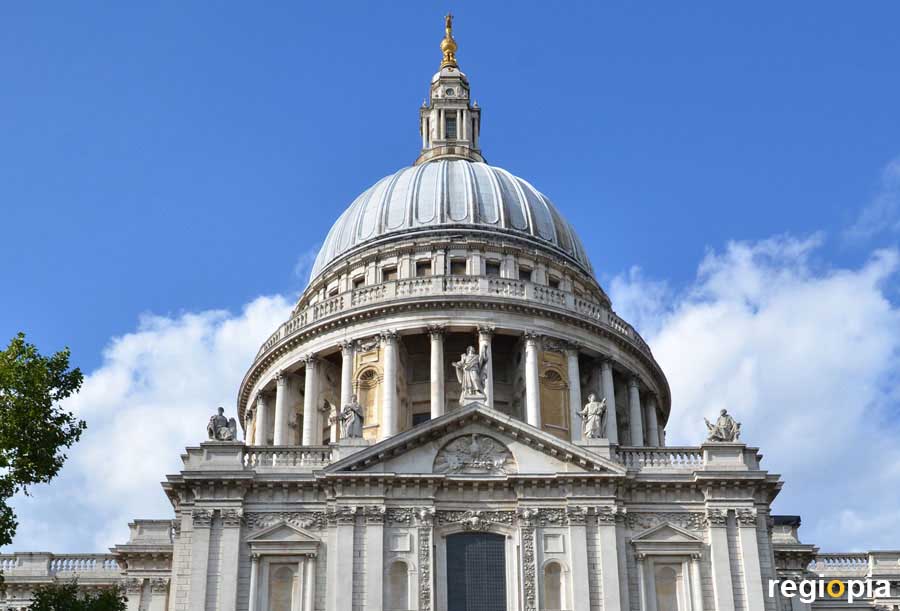
St. Pauls Cathedral
Like a miracle, "St. Pauls Cathedral" survived the bombing of London in the Second World War undamaged. The church was built after the Great Fire of 1666, which completely destroyed the city of London. Christopher Wren was commissioned to build the new cathedral, which was completed in 1708. Since then "St. Pauls" was the biggest church in London and its 111 m high dome was the tallest construction in London for hundreds of years.
Underground Station: St. Paul's
ads
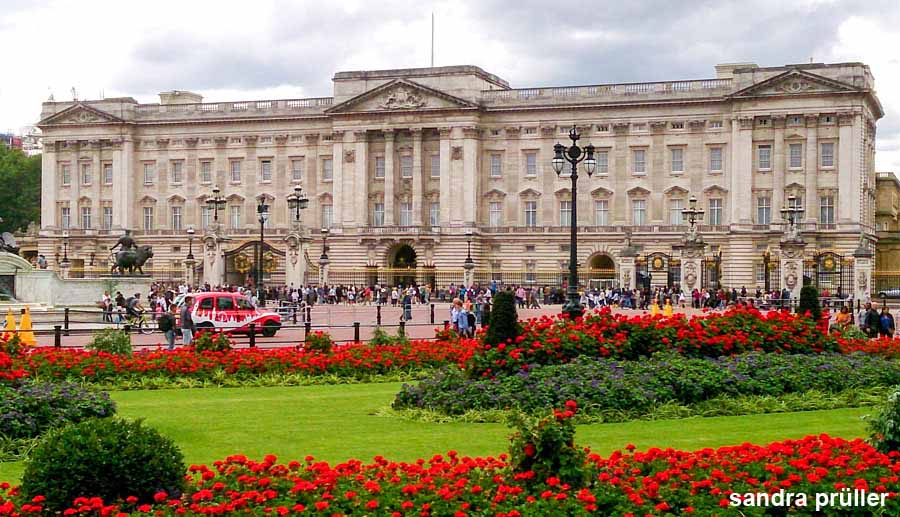
Buckingham Palace
Buckingham Palace is the residence of the British monarchy, Queen Elizabeth II lives here. The palace was built in 1703 for the Duke of Buckingham. The palace in its current form was built in 1830. The main facade on the Mall was built in 1913, to closed the courtyard. The first queen to inhabit Buckingham Palace was Queen Victoria. The Victoria Monument in front of the palace commemorates here. Behind the palace is the Buckingham Palace Garden, a park where summer receptions take place. The guards in front of the palace, in their red uniforms with black bearskin hats are a popular photo motif. Changing of the Guard usually takes place at 11 a.m. For the latest information check the link housholddivision. Buckingham Palace can be visited a few days a year, and tickets can be booked on the Royal Collection Trust website rct.uk.
Underground Station: Green Park
www.householddivision.org.uk/ceremonial-events
www.rct.uk/visit/the-state-rooms-buckingham-palace
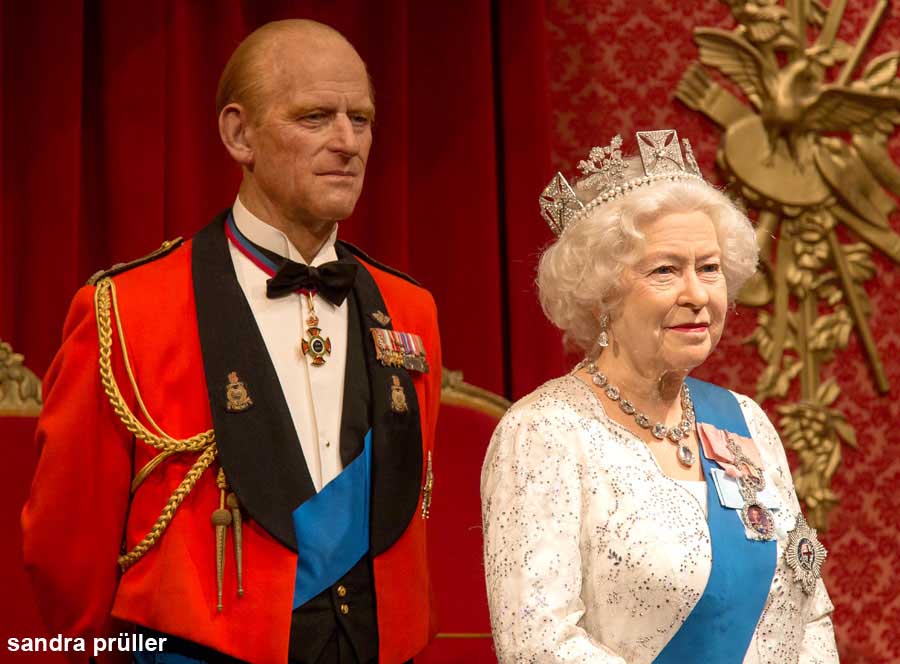
Madame Tussaud's
Marie Tussaud came from Switzerland to Paris, where she remodeled the heads of decapitated aristocrats with wax during the French Revolution. Because they quickly became unrecognizable on the skewers. In 1802 she exhibited her heads in London for the first time. She stumbled across the country with her wax museum and finally opened a permanent exhibition in London. Dead aristocrats eventually became living celebrities and stars. The concept worked and became a tourist attraction of London. Now there are branches of Madame Tussaud's in many cities around the world.
Underground Station: Baker Street
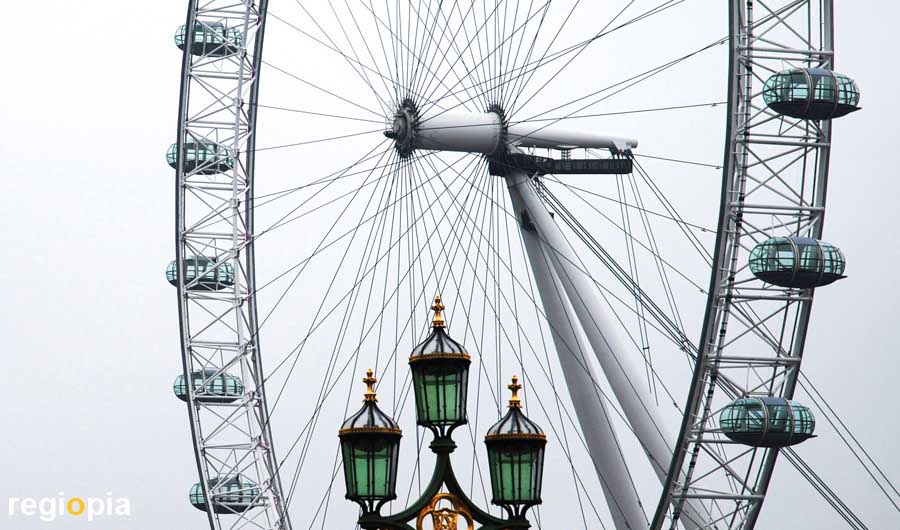
London Eye
The 135 m high Ferris wheel London Eye opened in 2000 and was the tallest Ferris wheel in the world until 2004. The glass gondolas are air-conditioned and always turn horizontally. A round trip takes 30 minutes. The Ferris wheel turns slowly at 0.9 km / h so that you can get in and out without the Ferris wheel having to stop. The 32 cabins are completely glazed and offer a view of the whole city in good weather. Check the link for prices and opening times.
Underground Station: Waterloo
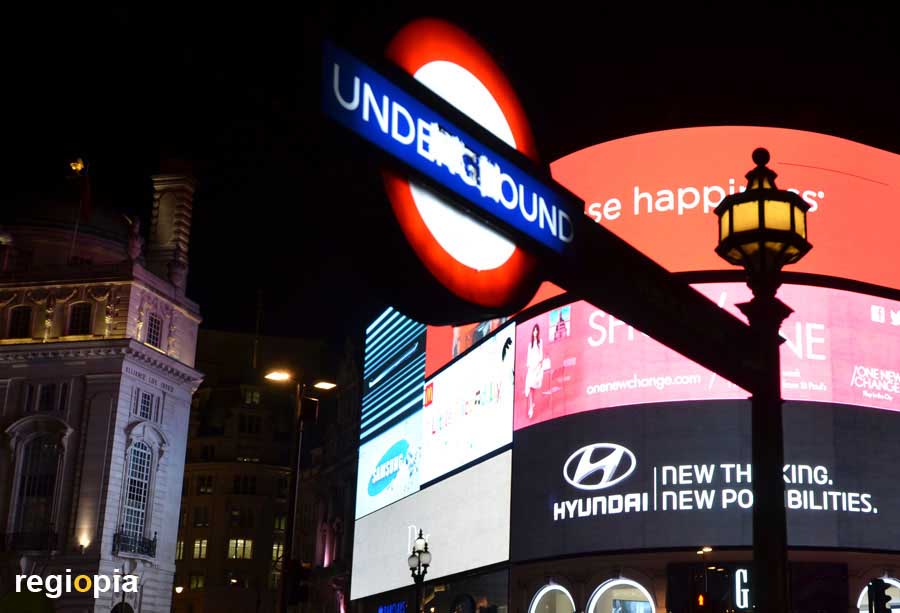
Piccadilly Circus
Piccadilly Circus is the lively center of London. When London was still the center of the British Empire, the square was considered the center of the world, at least from the English perspective. The sculpture "Angel of Charity" stands on the square, reminiscent of Cupid with a bow and arrow. The figure stands on the Shaftesbury Memorial Fountain, which was built in 1893. The name Piccadilly comes from the Spanish word picadillo. It designates a white collar, which consists of dense loops. A tailor made this type of collar on Piccadilly Street, which subsequently got this unusual name.
Piccadilly Circus is a busy intersection on the north side of which an entire facade has become an advertising space. The curved facade was previously covered with neon signs until high-resolution video walls were installed in 2017. Since then, colorful advertising films have lit up the night.
Underground Station: Piccadilly Circus
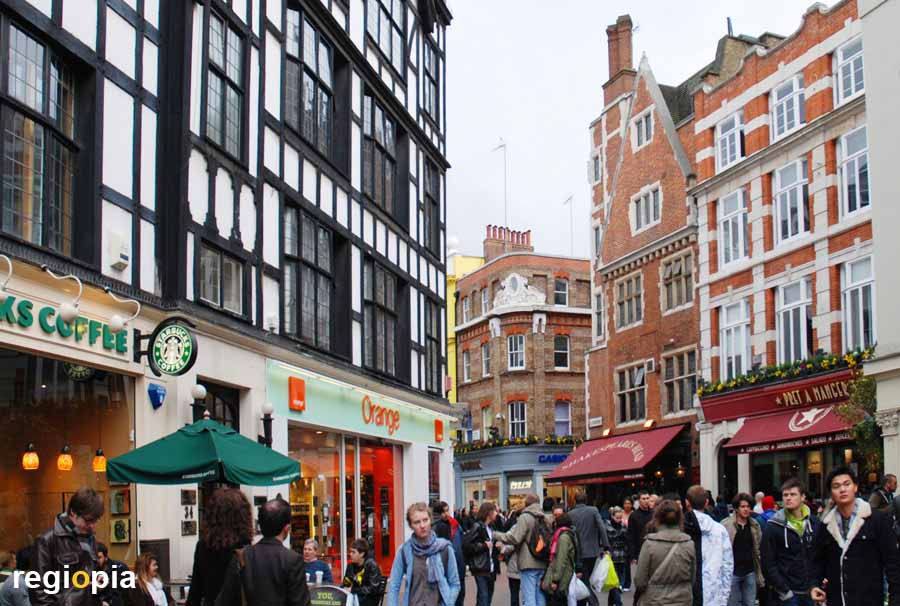
Carnaby Street
Carnaby Street became famous in the "Swinging Sixties" by fashion designers and still lives from the glamor. Today, the pedestrian zone is a popular shopping street in the heart of London with many international fashion stores. If you live in a big city yourself, you won't discover many new brands. A look into the small side streets can be more worthwhile. Carnaby Street is located between Oxford Circus in the north and Piccadilly Circus in the south.
If you are looking for noble men's outfitters, you should find it on Jermyn Street. If you are looking for tea as a souvenir, you should go to Twinings (216 Strand).
Underground Station: Piccadilly Circus or Oxford Circus
ads
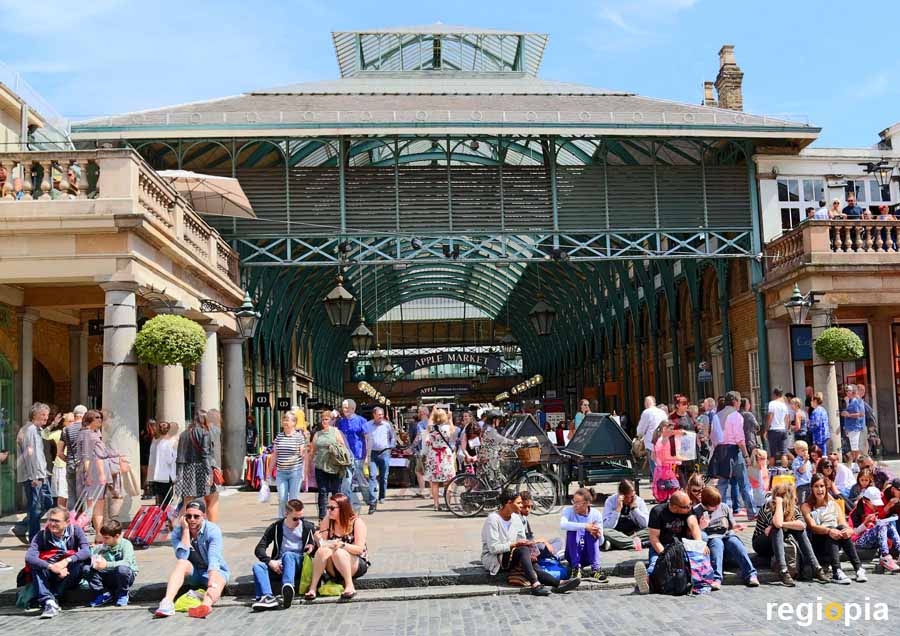
Covent Garden
In the Middle Ages, the Convent of St. Peter maintained a vegetable garden here. In the 17th century, Inigo Jones designed a classicist square where a thriving market was born. The current Covent Garden market hall was built in 1830. There are many shops and restaurants under the cast iron and glass covered roof. There is always a lot going on around Covent Garden, it is one of the busiest places in central London. Covent Garden is also home to the Royal Opera House and the London Transport Museum, where you can admire old double-decker buses and other vehicles.
Underground Station: Covent Garden
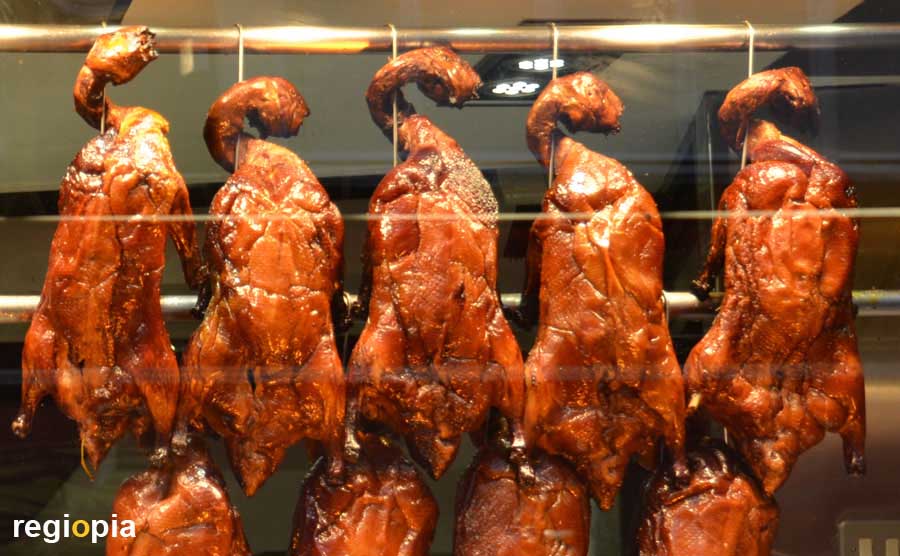
Chinatown
With Hong Kong Great Britain had a colony in China. Traders and workers came to London by sea. The first Chinatown was built near the port in the East End of London. This Chinese enclave was destroyed by bombs in World War II. A new Chinatown emerged in Soho in the 1970s. Many Chinese restaurants, shops and bakeries opened a business here. Even though Chinatown has become very touristy, there are some interesting treats to discover. There is also a large selection of restaurants that cook according to local recipes.
Underground Station: Piccadilly Circus or Leicester Square
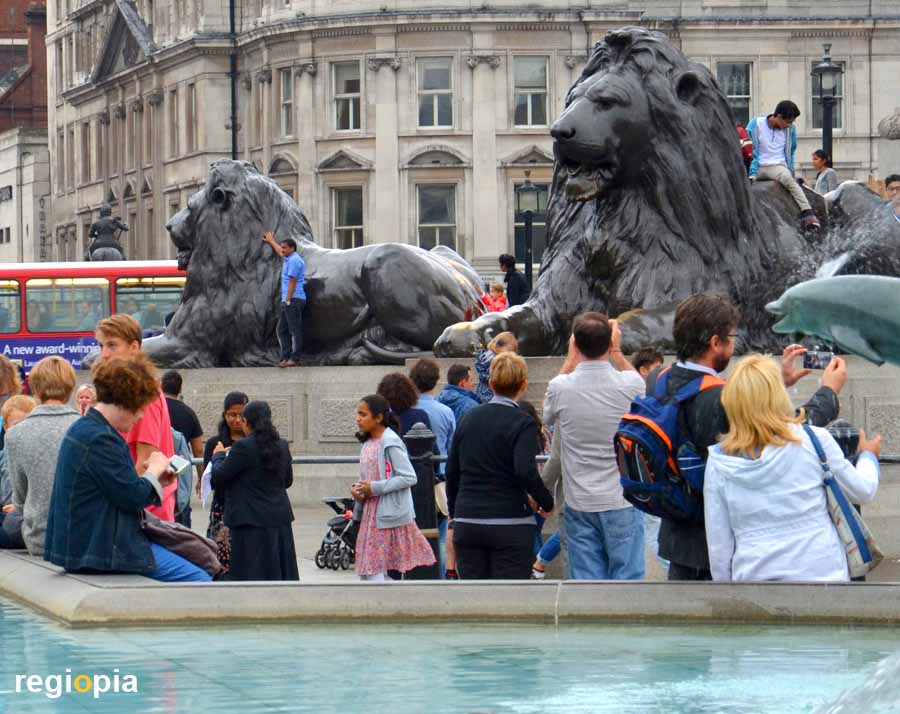
Trafalgar Square
Trafalgar Square is one of the largest squares in the centre of London. The name is a reminiscent of a naval battle of 1805. The Royal Navy under Sir Nelson defeated the French fleet and the Spanish Armada with its victory at Cap Trafalgar, south of Cadiz, Spain. An invasion of England by Napoleon was no longer to be feared. Admiral Horatio Nelson was hit by a bullet at the Battle of Trafalgar and died after the battle was won. Sir Nelson was buried with honor in Saint Paul's Cathedral.
The Nelson's Column on Trafalgar Square commemorates the victorious Admiral. The pillar is guarded by four giant lions. To the north of the Nelson's Column are two fountains that were also built to commemorate Navy admirals. Behind the fountains is the National Gallery and on the right is the church St Martin-in-the-Fields.
Underground Station: Charing Cross
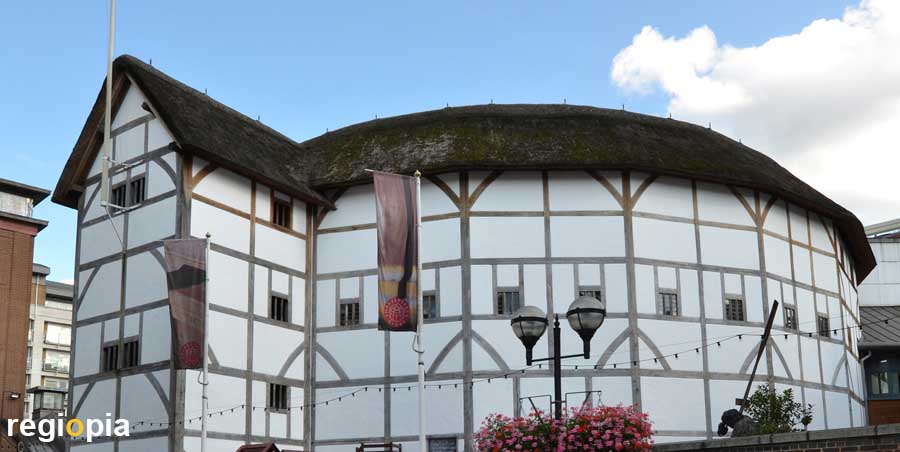
Shakespeare's Globe Theatre
The Globe Theater is a historic theater with wooden stands that was built in 1599. William Shakespeare was a shareholder of the theater and wrote the plays. It was the most popular theater in the city until 1642. Then all theaters in London were closed by law by the Puritans. In 1989 the foundations were excavated and the building was rebuild according to the historical model. The half-timbered theater has covered spectator stands, but the interior is open-air. In 1997 the Shakespeare's Globe Theater was reopened. There are theater performances and guided tours of the building. The Globe Theatre is a major tourist attraction of London on the Bankside.
Underground Station: London Bridge
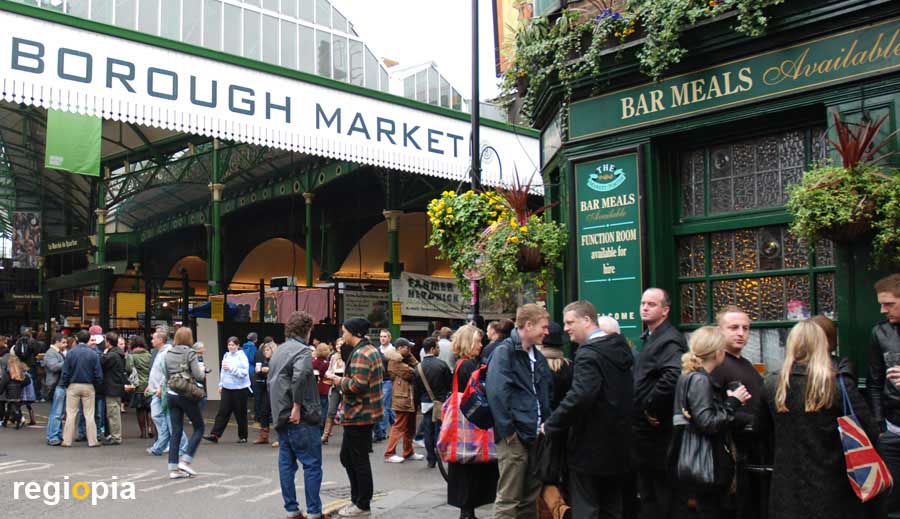
Borough Market
The "Borough Market" is considered the oldest and most beautiful market in London. Due to the favorable location on the southern bank of the Thames, a market already emerged here in the Roman era. The market hall was built in 1850, with extensions in the following years. In 2017 seven people were killed at the market by an Islamic attack. The "Borough Market" is one of the most beautiful markets in Europe. There are many delights to discover.
Underground Station: London Bridge
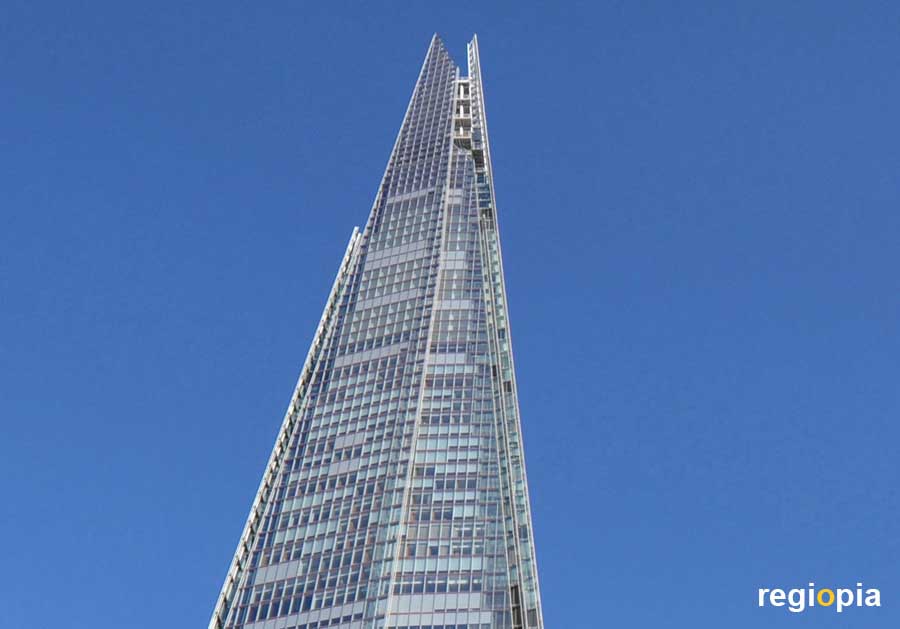
The Shard
The 310 m high skyscraper was the tallest skyscraper in Europe for a short time, but was surpassed in the same year by the 338 m high Mercury City Tower in Moscow. The Shard was designed by Italian architect Renzo Piano and opened in 2012. From the observation deck at 220 m, you have a magnificent view of London. Since the tower is on the south bank of the River Thames, you can see the financial center of London. The admission prices are high like the building, for prices and tickets check the link.
Underground Station: London Bridge
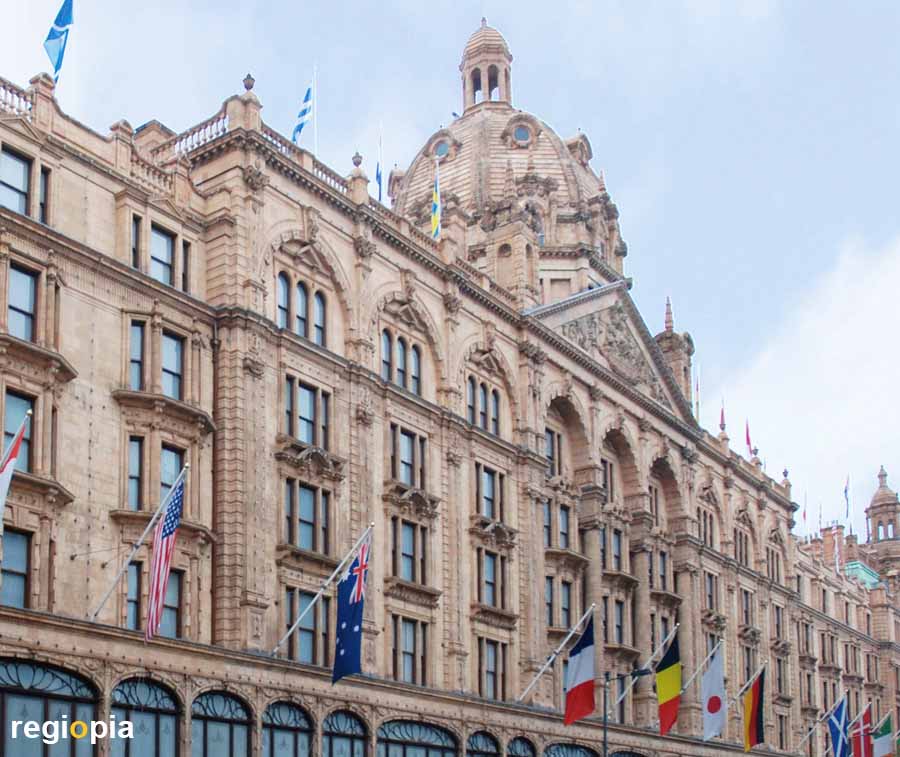
Harrods
Charles Henry Harrod founded the world-famous Harrods department store 1834 in London. The noble commercial building burned down in 1883. The new building in which the department store is still located was opened in 1903. Around 1980, the department store was the target of several IRA attacks in which several people were killed. Harrods is one of London's shopping attractions, even though the luxury department store is not in the main commercial area of Londen, south of Hyde Park.
Underground station: Knightsbridge
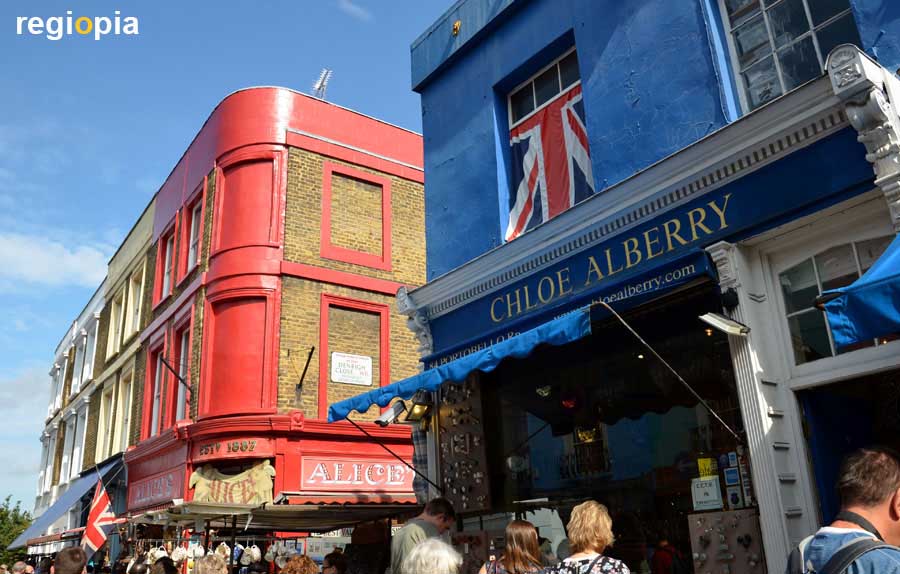
Portobello Market
The famous Antiques Market takes place in the otherwise rather quiet Notting Hill on Saturdays from 5:30 a.m. to 5 p.m. There are numerous antique shops along Portobello Road, which are complemented on Saturday by stalls on the street. The "Portobello Market" is famous for nice little shops and strolls in a relaxed atmosphere. Many stands also offer something to eat or drink.
Underground Station: Notting Hill Gate or Ladbroke Grove
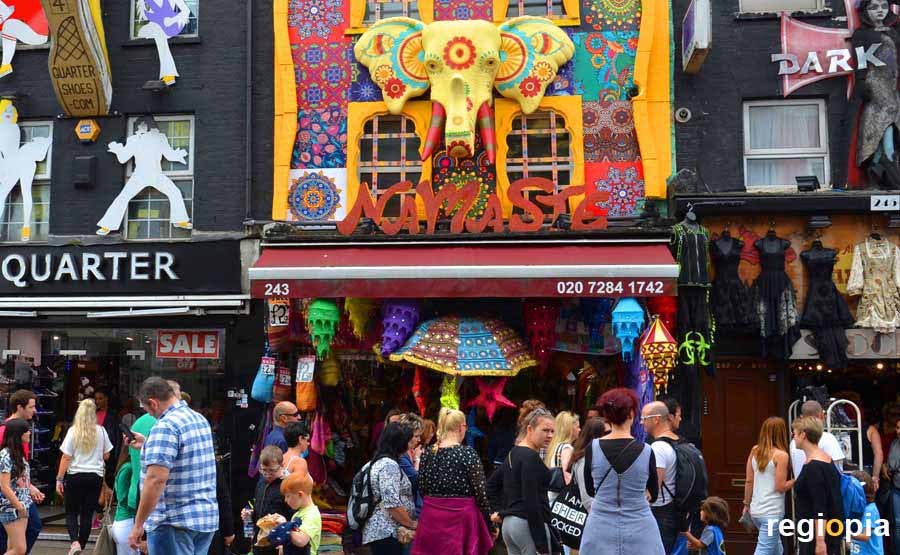
Camden Market
The Camden Market is a huge clothing market that takes place daily from 11 a.m. to 6 p.m. The facades of the houses are partially designed entirely according to the theme of the shop below. You can find elephants, huge shoes, dragons and planes on the house front. More interesting than Camden High Street is the Camden Lock Market with many street food stalls and the Stables Market just behind the Regent's Canal. If the Electric Ballroom is open, you should take a look, the club is occasionally used as a market hall for music and films during the day. There are also many cafés and restaurants around the Camden Market. The London Waterbus Company's Narrow Boats, which sail the Regent's Canal, also start from Camden Lock. Check the link for more information.
Underground Station: Camden Town or Chalk Farm
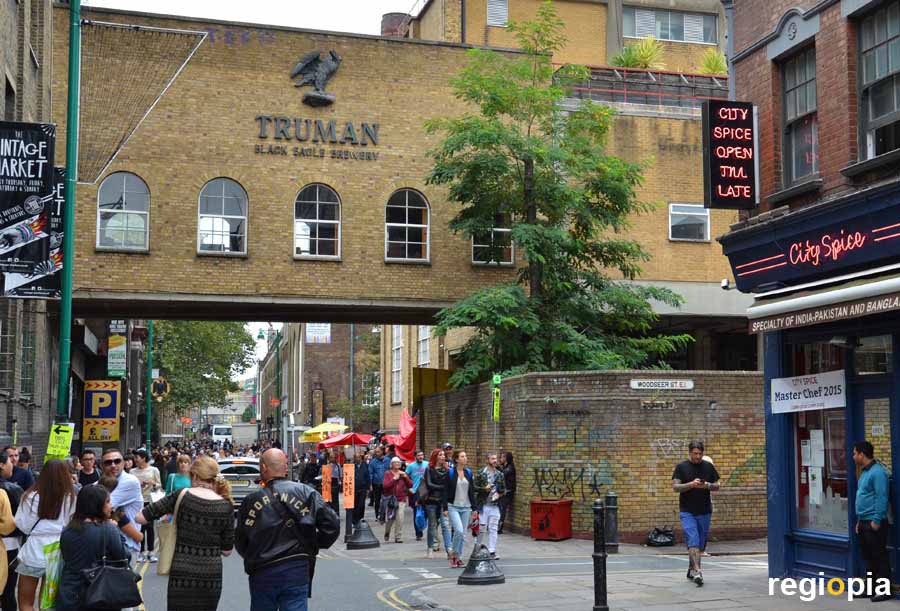
Brick Lane
Brick Lane in London's east end is also called Banglatown. Restaurants from India, Pakistan and Bangladesh dominate the street scene. The area seems run down and hip at the same time, street art can be found on every corner. One of the most exciting places in London. The hotspot is currently the Old Truman Brewery with cool shops and street food market. The east end changes its face quickly, a lot is built and renovated. The Old Spitalfields Market has already been renovated and has lost much of its charm. If you walk up Brick Lane north from the Whitechapel Gallery to Shoreditch, you get a good impression of the neighborhood.
Underground Station: Aldgate East
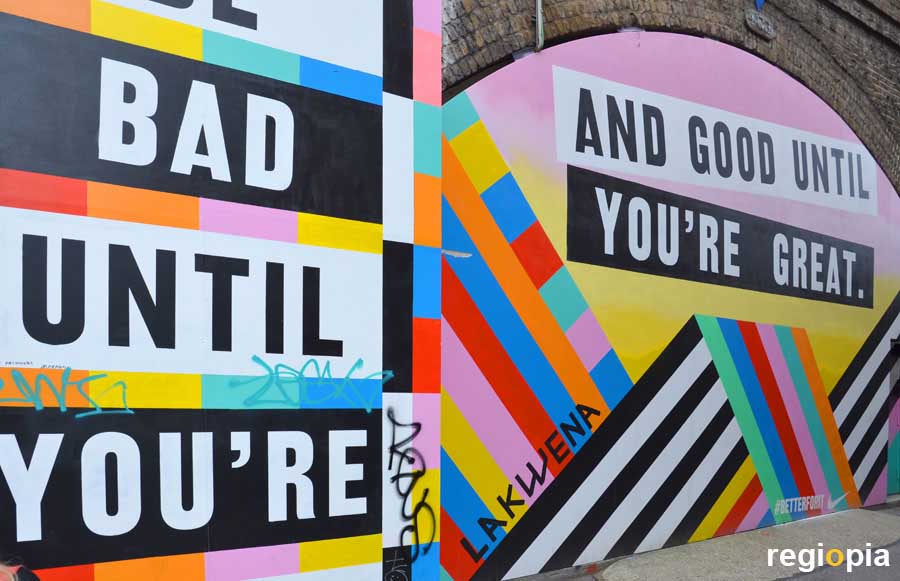
Shoreditch
Shoreditch is considered a trendy district with cool shops and bars. The rough charm of the working-class district sticks on every wall and next to trendy galleries are cheap Vietnamese restaurants. Shoreditch is not yet a tourist magnet, most of those who land here have continued up Brick Lane. The connection with the tube is also rather bad. Redchurch Street is interesting, most of the shops are on Old Street, and Shoreditch Flower Market is held on Columbia Road on Sundays because the Jewish people wanted to celebrate Shabbat without hustle and bustle.
Underground Station: Old Street
Map of sights in London
ads
London Great Britain
Welcome in London
The city is the European financial center. Almost all international banks have their European headquarters in the City of London. In recent years, many high-rise buildings have been built to meet the demand for high-quality office space. This enormous boom has made London one of the most expensive cities in the EU. After the Brexit this boom could end. International banks have already moved to Frankfurt and Paris.
ads
ads


